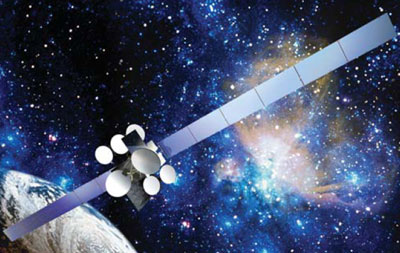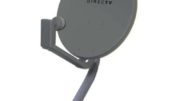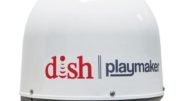It’s a word you hear a lot when you’re talking about satellite TV. Yet most of us don’t think about it, because we don’t really need to. You might know that there are many different transponders on one satellite. You might know that each transponder usually carries a bunch of channels. If you know all that, you know more than 99% of people already.
The way satellite television works
Satellite TV works because large facilities broadcast a signal up to a satellite. The satellite is more than just a mirror that bounces the signal back down to earth, although that’s how it acts. In fact, it gathers up all the information it receives, sends information back to the broadcast facility, and then repackages, redistributes, and retransmits that signal back down to earth. Your dish then picks it up.
The word transponder is a mashup of “transceiver” and “responder.” It describes all the things that it does. Transceivers both transmit and receive, and responders send a specific acknowledgement back to the broadcaster. You might have a plastic box in your car that beeps when you get on a toll road… that’s a transponder too. It reads a signal when you pass through the toll reader and in response, it sends the information about itself, and you get billed. When you’re not under the toll reader, it doesn’t respond to anything.
Satellite transponders

The electronics in a satellite organize all the channels so that they don’t interfere with each other. Each satellite has a license to broadcast on a range of frequencies, and that range is broken up into parts. Each part goes to a single transponder. Some transponders are “national.” That means that they send out a wide signal that covers the whole country. (Transponders that cover the entire United States use the term “CONUS,” originally a military term. It is just a shortening of “Continental United States.”) Some are “spot beams” meaning they only cover part of the country. Spot beams are used for local channels. They focus all their energy on a particular area that is supposed to get those channels.
All the signals are organized and go to different transponders. A single transponder can carry several channels at the same time (the exact number can vary.) Each transponder then broadcasts the final signal back down to earth on one of the frequencies licensed to that satellite.
If you are using a satellite receiver, you can go into the system test screens and see how well you are receiving all the transponders on a single satellite. Of course, some transponders will be spot beams so you won’t get them at all.
Transponder capacity
To some extent, the number of channels on a transponder can vary. A whole transponder signal is sent at once from the uplink facility so if that facility has more advanced encoding equipment they may be able to fit more channels. For years the standard was four HD channels per transponder, but some time ago DIRECTV started doing six HD channels per transponder, which gave 50% more capacity to existing satellites but required much more expensive equipment on the ground to make sure that the picture quality didn’t suffer.
When it comes to 4K, things change a little. Today’s 4K broadcasts take a full transponder. But, the good news here is that there is plenty of capacity on DIRECTV satellites. The whole fleet has been refreshed in the last five years. For better or worse, there aren’t as many 4K channels as we all thought there would be at this point, leaving DIRECTV in excellent shape for whatever is coming in the future.
Speaking of the future, if your future plans call for a DIRECTV upgrade, why not shop at Solid Signal for the best parts and accessories? We have the same exact items the professionals use!





